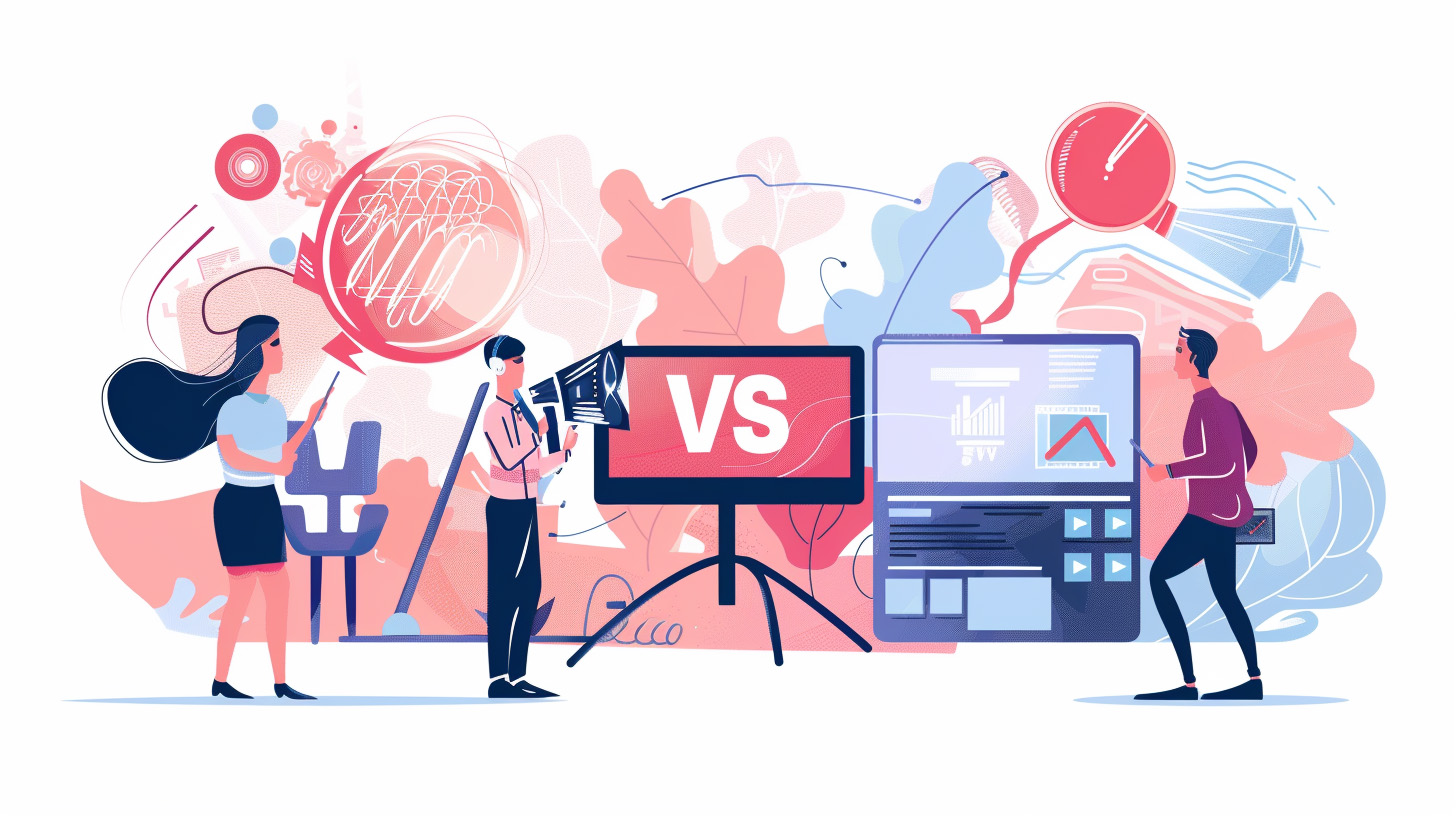
Media Buying vs Media Planning – What’s the Difference?
May 13, 2024 4 minutes
Let’s imagine something real quick: you’ve been using a single platform, like Facebook or Google Ads, to drive all your traffic and conversions. Things are going great, your business is growing, and you’re feeling on top of the world. But then, suddenly, the algorithm changes or your account gets suspended, and poof! Your primary source of traffic vanishes overnight.
That’s why understanding the difference between media buying and media planning is so important for making informed decisions about expanding your media placement. These two concepts might sound similar, but they play distinct roles in creating a successful marketing campaign that can help you scale your business to new heights.
Make sure your processor and gateway can handle to increase in transactions!
What is Media Buying?
Media buying is the process of purchasing advertising space and time on various media channels to reach a target audience and achieve specific marketing goals.
It involves identifying the most effective media outlets, negotiating prices, and placing ads to maximize the return on investment (ROI) for a given advertising budget.
The role of media buyers is to execute the media plan developed by media planners. They are responsible for building relationships with media vendors, negotiating rates, and ensuring that ads are delivered on time and in the right context. Media buyers must have a deep understanding of the media landscape, audience demographics, and the most effective channels for reaching specific target markets.
Media buying encompasses a wide range of media channels, including:
- Digital media: websites, social media platforms, mobile apps, and online video channels
- Traditional media: television, radio, print (newspapers and magazines), and out-of-home advertising (billboards, bus shelters, etc.)
- Emerging media: streaming services, podcasts, and other new platforms
The media buying process typically involves the following steps:
- Researching and selecting the most appropriate media channels based on the target audience and campaign goals
- Negotiating with media vendors to secure the best rates and placements
- Purchasing the ad space or time
- Trafficking the ads (ensuring they are delivered correctly)
- Monitoring and optimizing the ad campaign based on performance data
In recent years, programmatic advertising and automation have transformed the media buying landscape. Programmatic buying uses algorithms and real-time bidding to automatically purchase digital ad space based on predefined criteria, such as target audience demographics and budget. This approach allows for more efficient, data-driven media buying and helps optimize campaigns in real-time based on performance metrics.
Your ad spend means nothing if you can’t accept payments. We can secure it for you.
What is Media Planning?
Media planning is the process of strategically selecting a combination of media platforms to place ads and crafting a plan to reach a target audience effectively.
It involves researching and determining the best mix of media channels to achieve the desired marketing objectives, such as raising brand awareness, generating leads, or driving sales.
The role of media planners is to develop a comprehensive media strategy that aligns with the overall marketing goals. They analyze target audience demographics, behaviors, and media consumption habits to identify the most effective channels for delivering the advertising message. Media planners work closely with media buyers, creative teams, and clients to ensure that the media plan is executed successfully and achieves the desired results.
The media planning process typically involves the following steps:
- Conducting thorough market research to understand the target audience, their preferences, and media consumption habits
- Setting clear media objectives that align with the overall marketing goals
- Determining the budget and allocating resources across different media channels
- Selecting the optimal media mix based on specific audience insights, budget, and objectives
- Developing a detailed media plan that outlines the tactics, timelines, and metrics
- Implementing the media plan and monitoring its performance
- Analyzing the results and optimizing the plan based on data-driven insights
Market research and understanding the target audience are crucial aspects of media planning. By gathering data on audience demographics, psychographics, and media consumption patterns, media planners can identify the most effective channels and tactics to reach and engage the desired audience. This information helps in developing a targeted media strategy that maximizes the impact of digital advertising efforts.
Developing a media strategy involves selecting the best mix of media channels to achieve the campaign goals. Media planners consider various factors, such as reach, frequency, engagement, and cost-effectiveness, when choosing the appropriate media mix. This may include a combination of traditional media (e.g., television, radio, print) and digital media (e.g., social media, display ads, search engine marketing).
The goal is to create a cohesive and integrated media plan that delivers the right message to the right audience at the right time and place.
Killer ads but no conversions? It could be your processor! Let’s find out.
Comparing Media Buying vs Media Planning
While media buying and media planning are closely related and work together to create successful marketing campaigns, there are some key differences between the two roles.
Media planning is the strategic process of determining the best mix of media channels to reach a target audience effectively and achieve the desired marketing objectives. Media planners conduct thorough market research, analyze audience demographics and behavior, and develop a comprehensive media strategy that outlines the optimal channels, tactics, and budget allocation.
Media buying is the execution of the media plan, focusing on purchasing advertising space and time on the selected media channels. Media buyers negotiate with media vendors, secure the best rates and ad placements, and ensure that ads are delivered according to the plan. They also monitor campaign performance, optimize tactics based on data insights, and manage relationships with media partners.
Despite these differences, media buyers and media planners work closely together to create successful media campaigns. Planners provide buyers with the strategic direction, target audience insights, and recommended media mix, while buyers offer feedback on the feasibility of the plan, market trends, and campaign execution. This collaboration ensures that the media strategy is not only well-researched and targeted but also effectively implemented and optimized for the best results.
The importance of both media planning and media buying in creating a successful media campaign cannot be overstated. A well-crafted media plan lays the foundation for a targeted, effective, and cost-efficient campaign, while skilled media buying ensures that the plan is executed flawlessly, reaching the right audience at the right time and place.
Together, these two functions form a powerful combination that maximizes the impact of advertising efforts and drives meaningful business results.
In-House vs Agency: Which is Right for Your Business?
When it comes to media buying and planning, one of the biggest decisions you’ll face is whether to handle these tasks in-house or partner with a media buying agency. Both options have their pros and cons, and the right choice for your business will depend on factors like your budget, expertise, and available time and resources.
Let’s take a closer look at the advantages and disadvantages of each approach:
Pros of Using a Media Buying Agency
- Expertise: Media buying agencies bring specialized knowledge and experience to the table. They have a deep understanding of the media landscape, audience targeting, and the most effective strategies for achieving your digital marketing goals.
- Time savings: Outsourcing media buying and planning to an agency frees up your internal team to focus on other critical tasks, like product development and customer service.
- Access to resources: Agencies have access to a wide range of tools, software, and data that can enhance your campaigns and improve efficiency.
Cons of Using a Media Buying Agency
- Cost: Working with an agency comes with a significant financial investment. Agencies typically charge fees and commissions, which can add up quickly, especially for businesses with limited budgets.
- Limited control: When you outsource media buying and planning to an agency, you may have to give up some control over your advertising strategy and execution.
- Communication challenges: Effective communication is crucial when working with an agency. Miscommunications or lack of clarity can lead to suboptimal campaign performance.
Pros of Handling Media Buying and Planning In-House
- Cost savings: By avoiding agency fees and commissions, businesses can allocate more of their budget to actual media spend.
- Direct control: In-house media buying and planning gives you complete control over your campaigns, allowing you to make quick strategic changes and adjustments as needed.
- Brand continuity: Your internal team has a deep understanding of your brand voice, tone, and style, ensuring consistency across all your marketing efforts.
Cons of Handling Media Buying and Planning In-House
- Limited expertise: Your in-house team may not have the same level of expertise and knowledge as a specialized agency, which can lead to less effective campaigns and missed opportunities.
- Resource constraints: Smaller businesses may not have the necessary staff or software to effectively handle media buying and planning in-house, leading to suboptimal campaign performance and wasted spend.
- Time-consuming: In-house media buying and planning can be time-intensive, especially for teams with limited resources, potentially taking focus away from other critical business functions.
When deciding between in-house and agency media buying and planning, consider the following factors:
- Budget: Evaluate the costs of each option against your available marketing budget and overall business goals.
- Expertise: Assess your internal team’s knowledge and skills in media buying and planning, and determine whether you need the specialized expertise an agency can provide.
- Time and resources: Consider the time and resources you can dedicate to media buying and planning, and whether outsourcing these tasks would allow your team to focus on other critical areas of your business.
The Dangers of Relying on a Single Traffic Source
As a business owner, it’s easy to fall into the trap of relying on a single traffic source that’s delivering great results. Whether it’s Google Ads, Facebook, LinkedIn, or any other platform, putting all your eggs in one basket can be a recipe for disaster. Trust me, I’ve seen it happen time and time again, and it’s not pretty.
By spreading your advertising efforts across multiple marketing channels, you can protect your business from the risks associated with relying on a single platform. These risks include algorithm changes, account suspensions, and even the platform going out of business altogether.
A diverse media strategy might include a mix of:
- Search engine marketing (Google Ads, Bing Ads)
- Social media advertising (Facebook, Instagram, LinkedIn, Twitter)
- Display advertising (Google Display Network, programmatic ads)
- Content marketing (blog posts, videos, podcasts)
- Email marketing
- Influencer marketing
- Affiliate marketing
By allocating your budget across multiple channels, you can create a more resilient marketing ecosystem that can withstand the ups and downs of any single platform. Plus, a diverse media mix allows you to reach your target audience through multiple touchpoints, increasing brand awareness and engagement.
But diversification isn’t just about protecting your business from risks – it’s also about unlocking new opportunities for growth and scale. By experimenting with different media channels, you can discover untapped audiences, test new messaging and creative approaches, and find new ways to connect with your customers. This can help you scale your business more effectively and efficiently, as you’re not limited by the constraints of a single platform.





29 thoughts on “Media Buying vs Media Planning – What’s the Difference?”